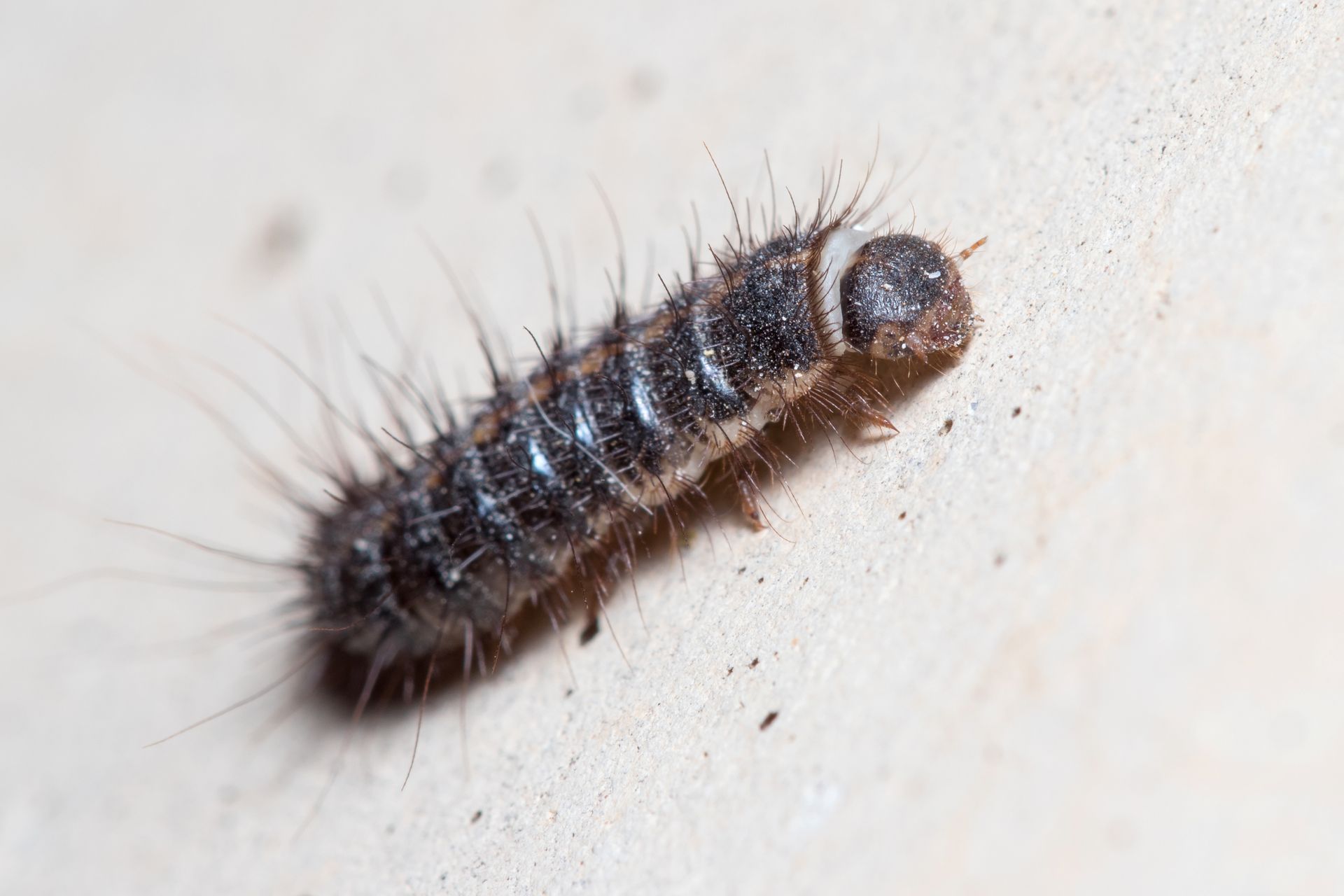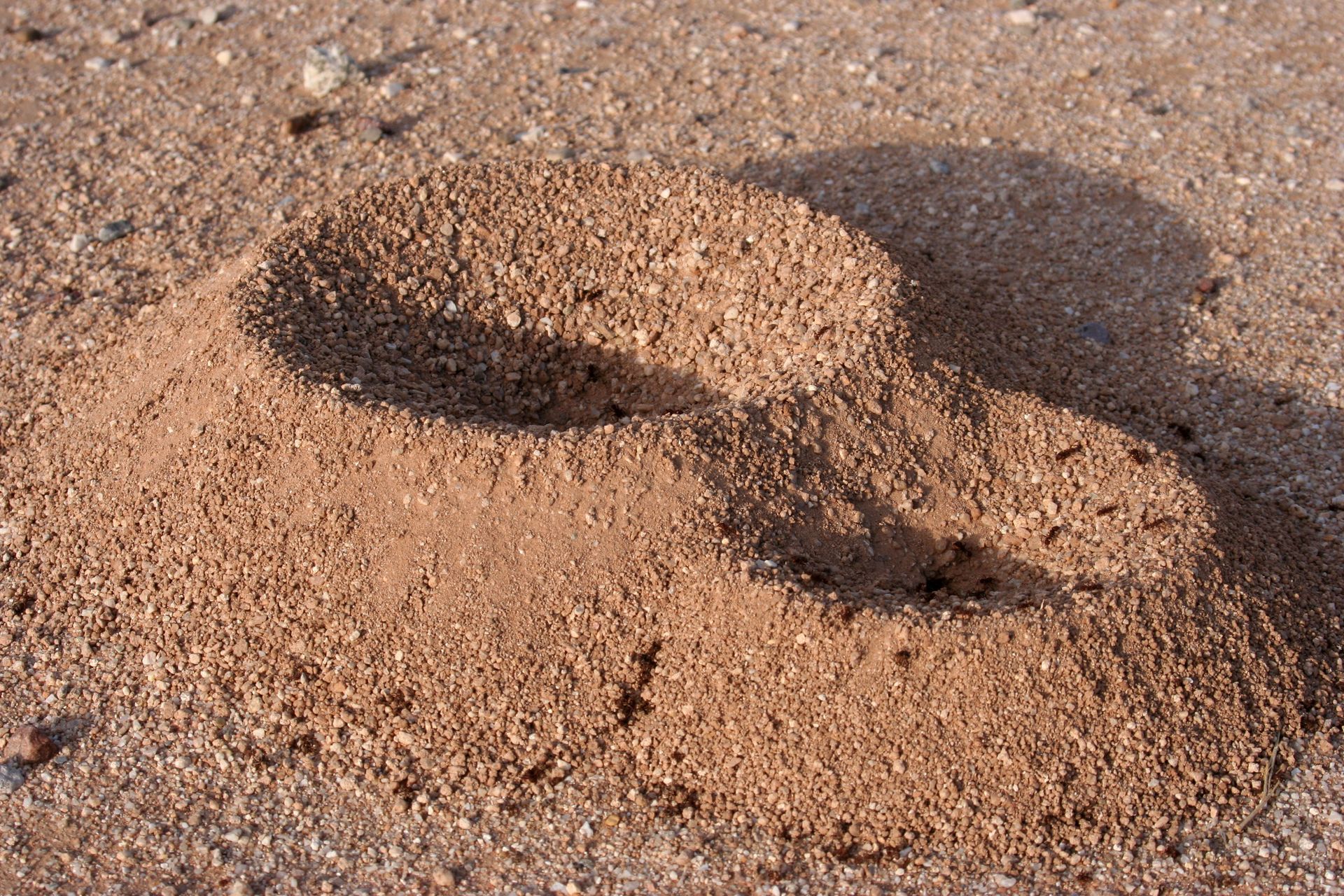What Causes Carpet Beetles Inside Your Home?

Carpet beetles, though small in size, can become a significant nuisance within homes. These pests undergo multiple life stages, with each phase presenting unique challenges for homeowners. Adult carpet beetles often enter residences through open windows or doors while seeking out suitable environments to lay their eggs. Once inside, they target areas rich in the preferred food sources for their young, which include natural fibers found in carpets, furniture, and clothing. The larvae are particularly destructive because they feed on a variety of organic materials. Without proper prevention and maintenance, carpet beetles can establish themselves in hidden corners, air ducts, or beneath furniture which make detection and elimination a complex task for unsuspecting homeowners.
Where Do Carpet Beetles Come From?
Carpet beetles primarily originate in outdoor environments, where they play a role in the natural ecosystem. These insects are drawn to flowering plants because they survive on a diet of pollen and nectar in gardens and landscapes. Their ability to fly enables them to easily find their way inside through open windows or doors in search of suitable environments to lay their eggs.
How Do Carpet Beetles Get Inside?
Carpet beetles employ various strategies to infiltrate homes. These resourceful insects can slip through the smallest of openings including gaps around window frames, door thresholds, and even utility entry points. Their attraction to light helps guide them towards potential access points which they use to gain entry. Interestingly, carpet beetles can also make their way indoors through less obvious routes like chimney flues, HVAC ducting, or even by hitching a ride on cut flowers or potted plants brought in from the garden. Their ability to navigate through wall voids and other hidden passageways within a home's structure further complicates detection and prevention efforts which makes on going monitoring crucial in detecting these persistent pests.
What Causes Carpet Beetles?
Carpet beetles are opportunistic pests that thrive in environments rich in their preferred food sources and nesting materials. Understanding the factors that attract and sustain these insects is crucial for effective prevention and control. Here's a list of key elements that contribute to carpet beetle infestations:
- Keratin rich materials: Carpet beetle larvae consume items containing keratin which is a protein found in natural fibers. This makes wool carpets, silk garments, and leather goods prime targets as well as shed hair from pets.
- Undisturbed areas: Seldom used spaces like attics, basements, and rarely opened closets provide ideal breeding grounds for these pests as they often contained stored items made of materials that carpet beetle larvae commonly feed on.
- Organic debris: Accumulations of lint, hair, and dead insects in hidden corners or along baseboards serve as food sources for carpet beetle larvae.
- Improper storage: Inadequately sealed containers of dry goods or improperly stored textiles can attract and sustain carpet beetle populations.
- Indoor flora: Adult carpet beetles are drawn to pollen so indoor flowers and plants can attract adults inside where they will lay their eggs.
- Exterior lighting: Bright outdoor lights can inadvertently lure adult carpet beetles towards buildings which increases the likelihood of infestation.
By addressing these attractants and creating an environment less hospitable to carpet beetles, homeowners can significantly reduce the risk of infestation and protect their belongings from these persistent pests.
Signs You Have Carpet Beetles
Prompt identification of carpet beetle presence is essential to limit potential harm and ensure successful remediation efforts. Vigilant homeowners should be aware of several telltale signs that may indicate the presence of these persistent pests. Here's a list of key indicators to watch for:
- Unexplained fabric damage: Irregular holes or threadbare patches on natural fiber items, particularly in hidden areas, can signal carpet beetle activity.
- Molted casings: The presence of small, hollow shells in secluded spots or along fabric edges indicates larvae development.
- Grainy residue: Fine, sand-like debris near affected items may be carpet beetle frass (droppings).
- Insect clusters: Groups of small, oval shaped beetles congregating near light sources or on windowsills, especially during spring.
- Unusual carpet wear: Localized areas of thinning or bare patches in carpets, particularly in low traffic zones.
- Lurking larvae: Small, fuzzy, worm like creatures with distinctive bristles found in dark, undisturbed areas.
- Seasonal beetle sightings: An increase in visible adult beetles during warmer months when they become more active.
- Inexplicable allergic reactions: Persistent skin irritations or respiratory issues may be caused by carpet beetle hair and shed skins.
By familiarizing yourself with these signs, you can quickly identify and address a carpet beetle infestation before it becomes severe.
How Do You Get Rid of Carpet Beetles?
Eliminating carpet beetles requires a multi-faceted approach that addresses both the visible insects and their hidden larvae. Here's a list of effective strategies to combat a carpet beetle infestation:
- Deep cleaning blitz: Conduct a thorough home cleaning that focuses on rarely disturbed areas where carpet beetles thrive.
- Heat treatment: Expose infested items to high temperatures through hot water washing to eliminate eggs and larvae.
- Targeted vacuuming: Use a powerful vacuum with crevice tools to extract beetles, larvae, and eggs from carpets, upholstery, and hard to reach corners.
- Boric acid application: Carefully apply boric acid powder to infested areas, focusing on dark, hidden spaces where larvae may hide.
- Professional pest control: Enlist the services of a licensed pest management professional for a comprehensive treatment plan, including targeted insecticide application and ongoing monitoring.
By implementing a combination of these methods, homeowners can effectively eliminate existing carpet beetle populations and prevent future infestations to safeguard their belongings and maintaining a pest free environment.
How to Prevent Carpet Beetles
Preventing carpet beetle infestations is far easier and more cost effective than dealing with an established problem. By implementing a proactive approach, homeowners can significantly reduce the risk of these persistent pests taking hold. Here's a list of effective prevention strategies:
- Regular fabric maintenance: Implement a routine for cleaning and inspecting natural fiber items, including seasonal rotation and proper storage of unused textiles.
- Diligent housekeeping: Maintain a rigorous cleaning schedule and pay special attention to hidden areas where organic debris can accumulate.
- Strategic landscaping: Minimize flowering plants near entry points and consider using pest resistant varieties in your garden to reduce attractive food sources.
- Entry point fortification: Conduct regular inspections of your home's exterior and seal any cracks and gaps in foundations, walls, and around utility lines.
- Climate control: Utilize dehumidifiers and proper ventilation to create an environment less conducive to carpet beetle larvae development.
- Natural deterrents: Incorporate cedar products or sachets containing herbs like lavender or rosemary in storage areas to repel carpet beetles.
- Vigilant inspection: Carefully examine secondhand items, particularly vintage textiles or taxidermy, before bringing them into your home.
- Pet grooming: Regularly groom pets and clean their bedding to reduce the accumulation of hair and dander that can attract carpet beetles.
- Smart storage: Use airtight containers for long-term storage of susceptible items and consider adding mothballs or cedar blocks for extra protection.
- Outdoor lighting modification: Replace standard exterior lights with sodium vapor bulbs or LEDs, which are less attractive to flying insects like adult carpet beetles.
By integrating these preventive measures into your home maintenance routine, you can create an environment that is far less inviting to carpet beetles which should help significantly reduce the likelihood of an infestation.
Contact EcoGuard Pest Management if You Are Dealing with Carpet Beetles
Although home remedies may suffice for small scale carpet beetle problems, stubborn or widespread infestations typically necessitate the skills of seasoned professionals. EcoGuard Pest Management offers specialized knowledge and advanced treatment options that go beyond typical home remedies. Their team of trained technicians can accurately assess the extent of your carpet beetle problem, identify hidden infestation sources, and implement a tailored eradication plan. By leveraging industry leading techniques and ecofriendly solutions, EcoGuard ensures not only the elimination of current carpet beetle populations but also provides strategies for long term prevention. Don't let carpet beetles compromise the comfort and integrity of your home. Reach out to EcoGuard Pest Management for a comprehensive, efficient, and lasting solution to your carpet beetle concerns.
Carpet Beetle Causes FAQs
Why do carpet beetles suddenly appear?
Carpet beetles may seem to appear suddenly due to their small size and hidden lifecycle stages. Often, these pests are present in a home for some time before becoming noticeable, with their population gradually increasing in secluded areas. The apparent sudden appearance typically coincides with adult beetles emerging to mate or when environmental conditions like warmer temperatures or increased humidity trigger increased activity and reproduction rates.
What is the fastest way to get rid of carpet beetles?
The fastest way to address a carpet beetle infestation is through a combination of thorough vacuuming and immediate laundering of affected items at high temperatures. For a more comprehensive and rapid solution, contacting a professional pest control service is often the most efficient approach, as they can quickly implement targeted treatments and identify hidden infestation sources. It's important to note that while these methods can provide fast initial results, complete eradication may require ongoing efforts and preventive measures to ensure long term success.
What attracts carpet beetles?
Carpet beetle larvae primarily feed on natural fibers rich in keratin like wool, silk, fur, and feathers so adult carpet beetles will seek out areas with these materials, so the larvae have ample food sources when they hatch. These pests are also drawn to dark, undisturbed areas where organic debris accumulates including pet hair, dead insects, and food crumbs. Additionally, adult carpet beetles can be attracted to light sources and may enter homes through open windows or doors, especially during warmer months when they're more active outdoors.
Is it bad to have carpet beetles?
Having carpet beetles in your home can indeed be problematic due to their destructive feeding habits on natural fibers, which can lead to significant damage to carpets, clothing, and other textile items. Beyond property damage, carpet beetle larvae shed tiny hairs that can cause skin irritation or allergic reactions in some individuals. While a small number of carpet beetles may not pose an immediate threat, their rapid reproduction rate means that a minor issue can quickly escalate into a full blown infestation if left unchecked which makes early detection and intervention crucial.

















